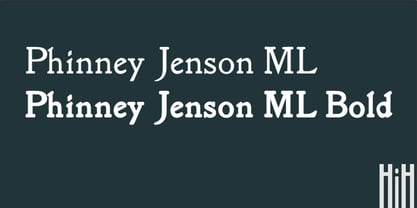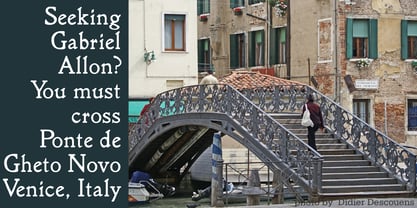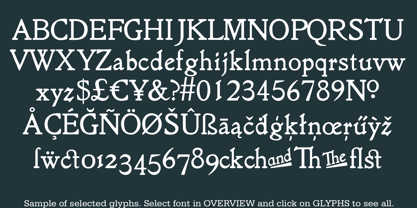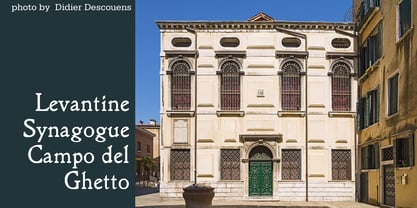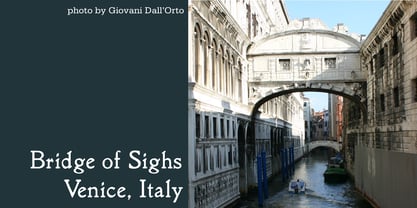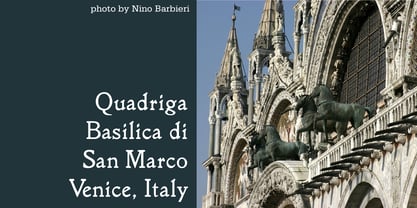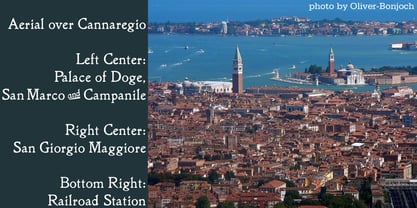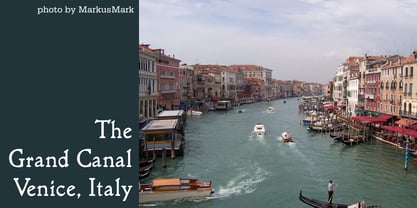Acerca de HiH
HiH son las siglas de Hand-in-Hand (mano a mano), porque no podría hacerlo sola, nada de esto. Me interesa tanto la historia como los tipos de letra y creo firmemente que ningún tipo de letra es una isla. Con esto quiero decir que cada tipo de letra tiene un contexto y una historia y es producto de la creatividad y el esfuerzo de una o varias personas. Dado que los alfabetos tienen el propósito de la comunicación escrita, un tipo de letra no puede ser TOTALMENTE original o sería inútil. Un tipo de letra debe, como mínimo, parecerse a otros tipos de letra que ya existen. Si un lector no puede reconocer ninguna de las formas de las letras, no podrá leer ninguna de las palabras formadas por esas letras y no habrá comunicación.
Con el tiempo, fui sintiendo una creciente aversión por la práctica, que se remonta a las primeras fundiciones, de copiar y renombrar fuentes sin atribución, como si cada fuente parecida fuera el producto de un esfuerzo original e independiente. Me resultaba confuso y frustrante, así que empecé a de descuento devolviendo el nombre original a algunos de los fuentes que había acumulado. A continuación, empecé a sentirme insatisfecho con los fuentes a los que les faltaban signos de puntuación o caracteres especiales que formaban (o deberían haber formado) parte del diseño original, etc. Empecé a añadirlos a medida que los necesitaba. Luego me encontré rediseñando algunos de los caracteres no alfabéticos. Creo que todos los caracteres deben tener el mismo aspecto que fuente y no estar tirados en la basura. Por ejemplo, creo que un tipo de letra negra debe tener un punto que refleje las mismas características de la pluma ancha que las formas de las letras. ¿Quién dibuja círculos perfectos con un plumín? Por otro lado, ¿para qué querría alguien símbolos matemáticos con una letra cobriza? Es como las versalitas de las letras negras o una versión swash de una sans-serif geométrica. Ya te haces una idea.
Y luego están todos los grandes tipos de letra victorianos y art nouveau que no he podido encontrar en formato digital. Personalmente, creo que el siglo XIX (más exactamente, de 1815 a 1914) es el más apasionante de la historia de la tipografía: los años de la adolescencia, desordenados, conflictivos y llenos del descubrimiento de la fuerza bruta que se desataba. No había escapatoria. Tuve que hacer las mías. Espero que le gusten y le resulten útiles.
- Tom the Boxer, HiH Retrofonts
Juegos de caracteres
Utilizamos un juego de caracteres estándar de Windows 3.1 con 213 caracteres visibles o glifos y 256 ranuras de caracteres en total (algunas reservadas para funciones de programa y no visibles) para los tipos de letra de visualización. Creemos que Unicode es realmente genial para las caras de texto, pero a menudo excesivo para fines de visualización. Utilizamos Fontographer 4.1 y nos gusta ver todo el conjunto de caracteres en una sola pantalla, lo que no es posible con Unicode.
Con frecuencia nos desviamos del conjunto ASCII estándar, que creemos que incluye algunas opciones tontas. No nos busque un "no lógico" en la cara. En cuanto a los signos diacríticos (acentos), generalmente incluimos el agudo ('), el grave (`), la diéresis o diéresis (¨), el circunflejo (ˆ), la tilde (˜), la cedilla (¸) y el macrón (¯). La mayoría de nuestras fuentes son reposiciones. Se da prioridad a los acentos y caracteres especiales necesarios para fijar la lengua materna del diseñador original. Bringhurst enumera 59 formas de letras sólo en alfabetos de base romana o latina (sin contar cirílico, griego, hebreo, etc.). Por ejemplo, hay cuatro O: la O estándar, la O acuchillada, la O con cuernos y la O abierta. Si añadimos las distintas combinaciones de acentos, desde O-acute para hasta O-abierta-ogonek, llegamos a un total de cuarenta variaciones de la letra O por sí sola. El viejo dicho de que no se puede ser todo para todos se aplica aquí.
Nota: en la Monarquía Austrohúngara, las lenguas administrativas oficiales eran el alemán y el húngaro. Aunque el checo, el polaco, el serbocroata y el esloveno eran importantes a nivel regional, no tenían carácter oficial por razones políticas. (De hecho, hubo periodos en los que se prohibió su uso).
Intentamos incluir ligaduras y caracteres alternativos que formaban parte del diseño original. También incluiremos caracteres especiales o dingbats cuando lo consideremos oportuno. Existe una gran cantidad de ornamentos de imprenta en los libros de muestras. Muchos ya han sido digitalizados en formato rasterizado por Dover y otros, y están disponibles en colecciones económicas en CD.
Iniciales decorativas
Por regla general, intento combinar las iniciales decorativas con las versalitas adecuadas, si las hay, o con una minúscula a juego o armoniosa. Mientras que las minúsculas o versalitas llevan acentos, las iniciales decorativas no, con la excepción de la C-cedilla y la N-tilde. Según
Manual de estilo de ChicagoEl francés, el portugués y el español pueden configurarse sin acentos en las vocales mayúsculas; y el alemán puede configurarse utilizando Ae, Oe y Ue en lugar de las mayúsculas diéresis. El italiano varía: los acentos son necesarios para los titulares, pero no para el texto. Æ y Œ no suelen incluirse en forma decorada a menos que formen parte del diseño original.
Bibliografía seleccionada
Los libros que figuran a continuación son los que consultamos con más frecuencia. Cada uno de ellos tiene algo único que ofrecer. Juntos pueden formar el núcleo de una biblioteca tipográfica útil. No se incluyen libros de muestra porque los más importantes están muy por encima de lo que la mayoría de la gente puede permitirse, ya que cuestan miles de dólares. Se espera que los titulares de las principales bibliotecas históricas, como la Universidad de Columbia en Nueva York y la de St. Bride en Londres, digitalicen gradualmente los más significativos y los publiquen en sus sitios web. Las donaciones podrían animarles, pero sería un proceso caro y largo.
- Annenberg, TYPE FOUNDRIES OF AMERICA AND THEIR CATALOGS (Oak Knoll Press, New Castle, Deleware, 1994) ISBN 1-884718-06-X. El propósito de este libro, y de otros similares, es recoger la historia de los tipos metálicos antes de que sea demasiado tarde. Son labores de amor y estamos en deuda con quienes se esforzaron porque esta historia nos pertenece a todos.
- Bain & Shaw, BLACKLETTER: TYPE AND NATIONAL IDENTITY. (Princeton Architectural Press, NYC 1998) ISBN 1-56898-125-2. Útil contribución a la comprensión del zeitgeist de las letras negras, contrarrestando los numerosos e improductivos comentarios negativos realizados por lectores familiarizados únicamente con las formas de las letras romanas. El Fraktur, especialmente, puede resultar difícil cuando no se está acostumbrado a él, pero funciona mejor con el alemán que con el inglés. Ahora eche un vistazo al birmano. Capítulo sobre lo que los editores denominan "tipos de letra híbridos alemanes": Behrens, Eckmann, Künstler, etc.
- Bringhurst, THE ELEMENTS OF TYPOGRAPHIC STYLE (Hartley & Marks, Vancouver [cerca de donde vive el autor] 2004. ISBN 0-88179-206-3 (pbk). Incomparable libro imprescindible sobre maquetación disciplinada y tipografía con una fuerte perspectiva histórica. Bringhurst es un gran crítico de la tipografía parroquial.
- Gray, NINETEENTH CENTURY ORNAMENTED TYPEFACES (University of California Press, Berkeley & LA 1976) ISBN 0-520-03074-5 Agotado. Encuéntrelo usado y cómprelo. Est $40. Publicado originalmente por Oxford University Press en 1938.
- Jasper, Berry & Johnson, ENCYCLOPAEDIA OF TYPEFACES, 4ª edición (Cassell & Co., Londres 2001); ISBN 1-84188-139-2 (pbk). Nota: las ediciones anteriores también pueden adquirirse en el mercado de libros usados.
- Lewis, TYPOGRAPHY DESIGN AND PRACTICE (Taplinger Publishing, NYC 1978) ISBN 0-8008-7922-8 (pbk). Discusión útil sobre los desarrollos artísticos y su impacto en la tipografía desde 1800. Establece una conexión entre las letras negras y las sin gracias.
- McGrew, AMERICAN METAL TYPEFACES OF THE TWENTIETH CENTURY, 2ª edición (Oak Knoll Books, New Castle, Delaware 1993); ISBN 0938768-39-5 (pbk). Incluye tipos de letra del siglo XIX que siguieron fundiéndose en el siglo XX, como Pekin.
- Petzendorfer, TREASURY OF AUTHENTIC ART NOUVEAU ALPHABETS, DECORATIVE INITIALS, MONOGRAMS, FRAMES AND ORNAMENTS (Dover Publications, Nueva York 1984); publicado originalmente por Julius Hoffmann de Stuttgart en 1903 con el título SCHRIFTENATLAS NEUE FOLGE: EINE SAMMLUNG VON ALPHABETEN INITIALEN UND MONOGRAMMEN ZUSAMMENGESTELLT VON HOFRAT L. PETZENDORFER. ISBN 0-486-24653-1 (pbk).
- Solo, THE SOLOTYPE CATALOG OF 4,147 DISPLAY TYPEFACES (Dover Publications, Nueva York 1992) ISBN 0-486-27169-2 (pbk). Como indica el título, el libro fue concebido como un catálogo comercial y no como un registro histórico. Debido a la práctica de renombrar los tipos de letra para apoyar ese propósito y a la falta de más información sobre dónde se recopilaron los tipos de letra, el libro es menos útil de lo que podría haber sido. Sería estupendo que se recopilara una base de datos complementaria. Muchos tipos no se encuentran en ningún otro sitio.
- The University of Chicago Press, THE CHICAGO MANUAL OF STYLE, 14th Edition (The University of Chicago Press, Chicago & London 1993) ISBN 0-226-10389-7. Ya está disponible la decimoquinta edición. Probablemente la mejor fuente de referencia para los detalles prácticos de la tipografía aplicada.
Seguir leyendo
Leer menos
